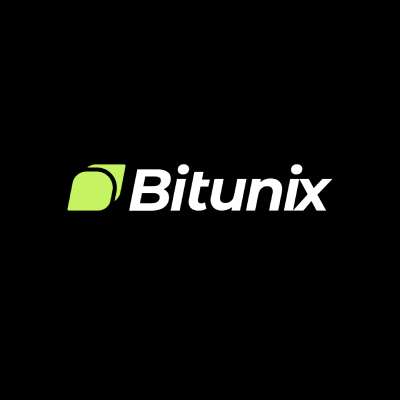Arthur Hayes: Avoiding CEX traps, what are the advantages of listing projects on DEX?
Original title: PvP
Original author: Arthur Hayes, Co-founder of BitMEX
Original translation: Ismay, BlockBeats
Editors Note: Arthur Hayes explores the current status of token listings in the crypto market, especially the impact of high CEX listing fees on project owners and investors. The article uses the case of Auki Labs to demonstrate the advantages of listing on DEX and emphasizes the importance of focusing on product développement and user growth. For those project owners who blindly pursue listing on CEX, Hayes reminds them to focus on long-term value rather than short-term prglace fluctuations and market hype.
The following is the original content:
PvP, or “Player vs. Player”, is a term often used by shitcoin traders to describe the current market cycle. It conveys a predatory sentiment, where victory comes at the expense of others. This concept is very common in traditional finance (TradFi). The core purpose of crypto capital markets is to allow those willing to risk their precious capital to enjoy the benefits of early participation in projects that hopefully grow with the development of Web3. However, we have strayed away from the bright path paved by Satoshi Nakamoto and then further promoted by Archangel Vitalik through the extremely successful Ethereum ICO.
In the current crypto bull run, Bitcoin, Ethereum, and Solana are shining. However, I define “new launches” as tokens released this year that have performed poorly for retail investors. VC firms are not affected by this. Hence, the PvP moniker has been given to the current market cycle. The result is a series of projects with high FDV but very low circulation. After launch, the prices of these tokens were flushed down the toilet like ordinary waste.
While that’s the sentiment, what does the data reveal? The smart analysts at Maelstrom did some deep digging to answer a few puzzling questions:
Is it worth paying the listing fees of an exchange so that your token has a better chance of going up?
Is the project launched with an overly high valuation?
After I dive into the data to answer these questions, I want to offer some unsolicited advice for projects that are waiting for the market to pick up in anticipation of a launch. To strengthen my argument, I want to single out one of the projects in Maelstrom’s portfolio, Auki Labs. They bucked the trend by not choosing a CEX for the first time and instead listed on a DEX with a relatively low FDV token. They want retail investors to earn alongside them as they succeed in their journey to build a real-time spatial computing market. They also hate the high listing fees charged by major exchanges and firmly believe there are better ways to return more value to end users than the big guys living in my neighborhood in Singapore.
Sample Set
We analyzed 103 projects that were listed on major shitcoin exchanges in 2024. This is not a complete list of all projects listed in 2024, but it is a representative sample.
Push up the price!
This is something we often hear founders repeat on advisory calls: Can you help us get on a CEX? So that our token price will soar. Hmm… I never fully believed this. I think creating a useful product or service and continuously adding paying users is the secret to success for Web3 projects. Of course, if you have a garbage project that is only worth something because Irene Zhao retweeted your content, then yes, you need a CEX so that you can dump it on those retail users. This is the case for most Web3 projects, but hopefully not for the ones Maelstrom invests in… Akshat, take note!

Post-IPO returns refer to the number of days since listing, and LTD refers to the performance since listing.
The price of the token has not skyrocketed on any exchange. If you paid an exchange listing fee hoping to see a chart of the token going up, sorry.
Who are the winners? VCs are the winners because the media token price is up 31% on the FDV of the past private round. I call this the “VC Extraction Price”. I will explain in detail in the second half of this article the distorted incentives of VCs that push projects to delay liquidity events as long as possible. But right now, the vast majority of people are just pure fools! That’s why those drinks are free at conference social events…hahaha.
Next, I’m going to go a little provocative. First, CZ is a hero in crypto because he’s being tortured by the demons of traditional finance in a medium-security prison in the United States. I love CZ and respect his ability to skillfully pocket money in all areas of the crypto capital markets. But…but…it’s not worth the huge price to get a listing on Binance. To clarify, Binance is not worth much as a primary exchange for your token’s initial listing. It would only be worth it if Binance was free as a secondary listing exchange because of your project’s performance and active community.
Founders also often ask in our calls: Are you related to Binance? We have to be listed on Binance, otherwise our token will not go up. This no listing unless its on Binance sentiment is very beneficial to Binance because it can charge the highest all-inclusive listing fees of any exchange platform.
Going back to the table above, while Binance-listed tokens outperformed other major exchanges on a relative basis, on an absolute basis, the token prices still fell. Therefore, listing on Binance does not guarantee that the token price will rise.
A project must offer or sell tokens, which are usually in limited supply, to exchanges at a cheap price in exchange for listing opportunities. Some exchanges are allowed to invest in projects at extremely low FDVs, regardless of the FDV of the last private round. These tokens could have been distributed to users to complete tasks that promote the growth of the project. A simple example is that trading applications reward traders for reaching certain trading volume targets by issuing tokens, which is called liquidity mining.
Selling tokens to a listing exchange can only be done once, but the positive flywheel effect created by increased user engagement will continue to pay dividends. Therefore, if you give away precious tokens just to get listed, and only outperform by a few percentage points on a relative basis, you as a project founder are actually wasting precious resources.
The price was not right.

As I always tell Akshat and his team, you have jobs at Maelstrom because I believe you can build a portfolio of top Web3 projects that outperforms my core holdings of Bitcoin and Ethereum. If not, I will continue to buy Bitcoin and Ethereum with my spare cash instead of paying salaries and bonuses. As you can see here, if you bought the tokens at or shortly after listing, you would have far underperformed the most hard currency ever, Bitcoin, and the Layer-1 of two of the top decentralized computing platforms, Ethereum and Solana. Given these results, retail investors should never buy newly listed tokens. If you want to get exposure to cryptocurrencies, just hold Bitcoin, Ethereum, and Solana directly.
This tells us that projects have to reduce their valuations by 40% to 50% when listing to become attractive on a relative basis. Who loses when a token is listed at a lower price? VCs and CEXs.
While you might think that the goal of VC is to generate positive returns, the most successful managers understand that they are actually playing the game of asset accumulation. If you can charge a management fee on a large notional amount, typically 2%, then you make money whether the investment appreciates or not. If you invest in illiquid assets like early-stage token projects, which are essentially just future token promises, as VCs do, how do you make them appreciate in value? You convince founders to continue to raise private rounds at ever-increasing FDVs.
When the FDV of a private financing round increases, VCs can revalue their illiquid portfolios to market prices, showing huge unrealized returns. These impressive past performances enable VCs to raise the next fund and charge management fees based on higher fund values. In addition, VCs cannot get paid if they don’t deploy capital. But it’s not easy, especially since most VCs based in Western jurisdictions are not allowed to buy liquidity tokens. They can only invest in the equity of some kind of management entreprise and, through an additional agreement, offer investors token warrants for the projects they develop. This is why the “Agreement for the Sale of Future Jetons” (SAFT) exists. If you want to get VC money and they have a lot of idle capital on their hands, you have to join the game.
For many VCs, having a liquidity event is extremely damaging. When this happens, gravity kicks in and the value of the token quickly returns to reality. For most projects, that reality is that they have failed to create enough products or services that enough users are willing to pay real money for to justify their extremely high FDV. At this point, the VC has to write down their book value, which negatively impacts their reported returns and the size of their management fees. As a result, VCs push founders to delay the launch of their tokens as long as possible and continue to raise private financing rounds. The end result is that when the project finally goes public, the token price plummets like a rock, as we just witnessed.
Before I thoroughly criticize VCs, lets talk about the anchoring effect. Sometimes, the human mind can be really stupid. If a shitcoin opens with a FDV of $10 billion, and its actually only worth $100 million, you might sell the token, resulting in a huge amount of selling pressure that causes the token price to plummet 90% to $1 billion, and trading volume disappears. The VC can still book value this illiquid shitcoin at a FDV of $1 billion, which is usually much higher than what they actually paid. Even if the price collapses, the market opening at an unrealistic FDV is still beneficial to the VC.
There are two reasons why CEXs want to see high FDV. First, trading fees are charged as a percentage of the notional value of the token. The higher the FDV, the more revenue and fees the exchange earns, regardless of whether the project is rising or falling. The second reason is that high FDV and low circulation are beneficial to exchanges because there are a large number of unallocated tokens that can be allocated to them. According to our sample data, the median circulation share of projects is 18.60%.
Listing Cost
I want to briefly touch on the cost of listing on a CEX. The biggest problem with current token launches is that the initial price is too high. As a result, whichever CEX gets the first listing rights has little chance of achieving a successful launch. If that wasn’t bad enough, overpriced projects also have to pay a lot of tokens and stablecoins for the privilege of “listing a piece of shit”.
Before commenting on these fees, I want to emphasize that I dont think there is anything wrong with CEX charging listing fees. CEX has invested a lot of money to accumulate a user base, which needs to be recovered. If you are an investor or token holder of CEX, you should be satisfied with their business acumen. However, as an advisor and token holder, if my project gave tokens to CEX instead of users, it would damage the future potential of the project and negatively affect the trading price of the token. Therefore, I either recommend that founders stop paying listing fees and focus on attracting more users, or recommend that CEX drastically reduce their prices.
There are three main ways that CEXs extract funds from projects:
Direct listing fees.
The project is required to pay a deposit, which will be refunded if the project is delisted.
Projects are required to make a specified amount of project marketing expenditure on the platform.
Typically, each CEX listing team will evaluate the project. The worse the project, the higher the fees. As I always tell founders, if your project doesnt have many users, then you need a CEX to dump your garbage into the market. If your project has product-market fit and a healthy and growing ecosystem of real users, then you dont need a CEX because your community will support your token price anywhere.
Listing Fees
Among high-end CEXs, Binance charges up to 8% of a project’s total token supply as listing fees. Most other CEXs charge between $250,000 and $500,000, usually paid in stablecoins.
deposit
Binance has designed a clever strategy that requires projects to buy BNB and stake it as a deposit. If the project is delisted, the BNB will be returned. Binance requires up to $5 million in BNB as a deposit. Most other CEXs require $250,000 to $500,000 in stablecoins or the CEXs token as a deposit.
Marketing expenses
On the high end, Binance requires projects to distribute 8% of their token supply to Binance users through platform airdrops and other activities. Medium-fee CEXs require spending up to 3% of token supply. On the low end, CEXs require marketing spends of $250,000 to $1 million, payable in stablecoins or project tokens.
All in all, getting listed on Binance could cost you 16% of your token supply and $5 million in BNB purchases. If Binance wasn’t the primary exchange, the project would still have to spend nearly $2 million in tokens or stablecoins.
For any CEX that challenges these numbers, I strongly recommend that you provide a transparent accounting of every fee or mandatory expense. I obtained this data from multiple projects that have evaluated the costs of major CEXs. Some of the data may be outdated. I reiterate that I do not think CEXs are doing anything wrong. They have a valuable distribution channel and are maximizing its value. My complaint is that the performance of the tokens after listing is not enough to justify the project founders paying these fees.
My suggestion
The game is simple, make sure your users or token holders gain wealth when your project succeeds. I’m speaking directly to you here, the project founders.
If you must do it, only raise a small private seed round to create a product for a very limited use case. Then, launch your token. Because your product is far from true market fit, the FDV should be very low. This sends a few messages to your users. First, it is risky, which is why they are buying in at such a low price. You may screw up, but your users will continue to support you because they got in on the game at a very low price. They trust you, give you more time, and you will find a solution. Second, it shows that you want your users to go on a journey of wealth creation with your project. This will incentivize them to tell more people about your product or service because users know that if more people join, they have the potential to get a good return.
Currently, many CEXs are under pressure to only accept high quality projects due to the poor performance of most newly listed projects. Selecting truly excellent projects is very difficult, considering how easy it is to fake it till you make it in crypto. Garbage in, garbage out. Each major CEX has its preferred metrics that it believes are leading indicators of success. Generally speaking, a very young project will not meet their standards. Whatever, there is something called a DEX.
On a DEX, creating a new trading market is permissionless. Imagine that you are a project that has raised $1 million USDe (Ethena USD) and want to provide 10% of the token supply to the market. You can create a Uniswap liquidity pool consisting of $1 million USDe and 10% of your token supply. Click a button and let the automated market maker set the liquidation price based on the market demand for your token. You dont have to pay anything for this. Now, your loyal users can buy your token instantly, and if you really have an active community, the token price will rise quickly.

Lets take a look at what Auki Labs tried differently when launching its token. Above is a screenshot from Coingecko. As you can see, Auki has a relatively low FDV and 24-hour trading volume. This is because it was first listed on the DEX and only later on the CEX of MEXC. So far, Aukis token price has increased by 78% from the previous private round price.
For Auki’s founders, listing their tokens is just another day. What they are really focused on is building their product. Auki’s tokens were first listed on Base, Coinbase’s Layer-2 solution, on Uniswap V3 on August 28th through the AUKI/ETH trading pair. They then listed on CEX MEXC for the first time on September 4th. They estimate that they saved about $200,000 in listing fees this way.
Auki’s token vesting schedule is also more equal, with team members and investors vesting on a daily basis over periods ranging from one to four years.
Sour Grapes
Some readers may think that I am just being resentful because I do not own a major CEX that makes a lot of money from new token listings. This is indeed true, my income comes from the appreciation of the tokens in my portfolio.
If a project in my portfolio is overpricing its token, paying huge fees to be listed on an exchange, but failing to outperform Bitcoin, Ethereum, and Solana, I have a responsibility to speak out about it. This is where I stand. If a CEX chooses to list a Maelstrom project because it has strong user growth and offers a compelling product or service, I fully support it. But I want the projects we support to stop worrying about which CEX will accept them and start focusing on their daily active user data.
This article is sourced from the internet: Arthur Hayes: Avoiding CEX traps, what are the advantages of listing projects on DEX?
Headlines The probability of the Fed cutting interest rates by 25 basis points in September is 67%. CMEs Fed Watch data shows that the probability of the Federal Reserve cutting interest rates by 25 basis points in September is 67%, and the probability of cutting interest rates by 50 basis points is 33%. The probability that the Federal Reserve will cut interest rates by 50 basis points by November is 45.2%, the probability of a cumulative cut of 75 basis points is 44.1%, and the probability of a cumulative cut of 100 basis points is 10.8%. The suspected official account of Scroll Foundation has been launched, and may release TGE and airdrop information According to feedback from many community members, the official account of the Ethereum L2 network Scroll Foundation…







